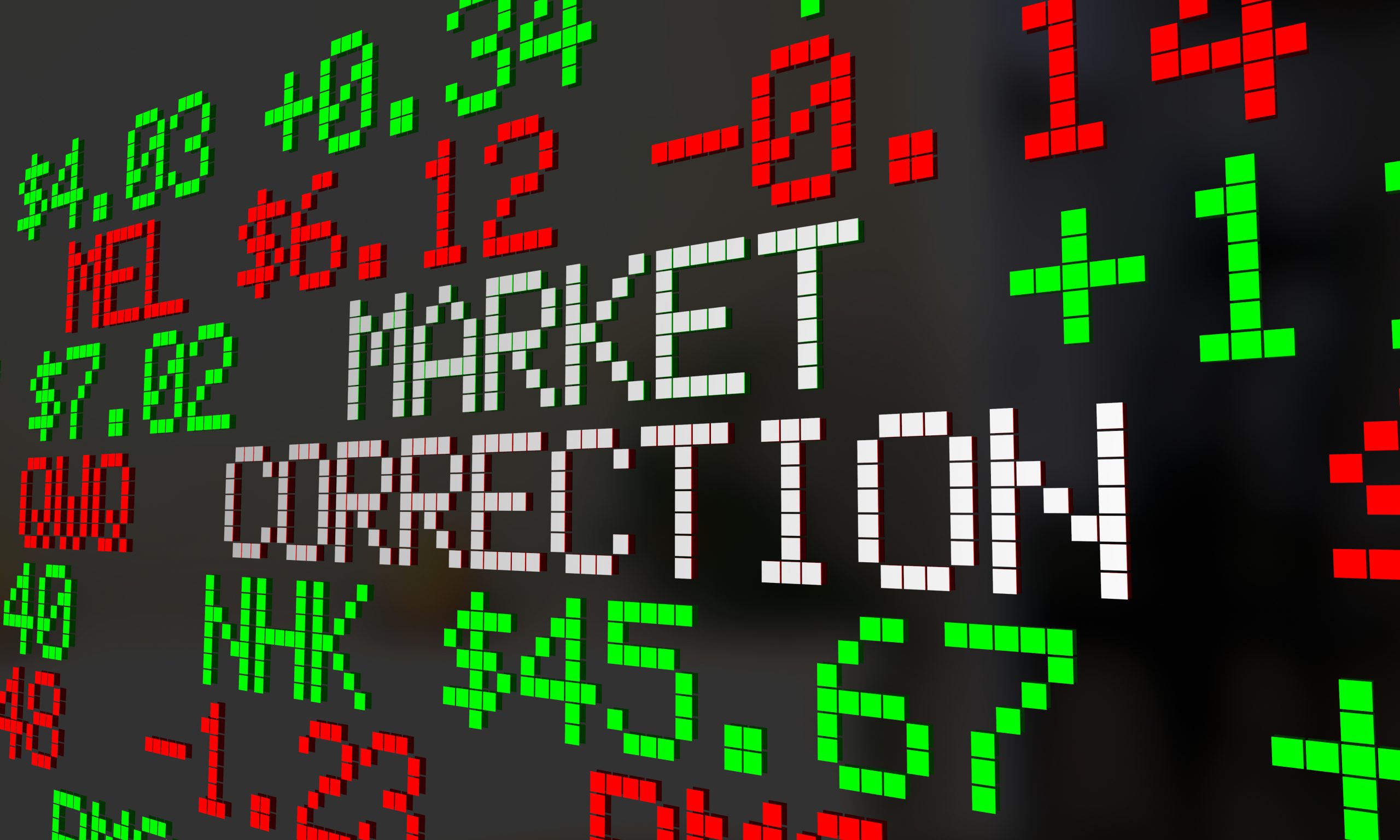Coronavirus Saber-Rattling Threatens Trade Peace

Remember back when the trade war between the United States and China was the biggest thing on most investors’ and traders’ minds?
That was of course pre-virus (P.V.), before the coronavirus pandemic swept across the globe, consuming the world’s attention and resources.
Interestingly, peak volatility in the financial markets before the coronavirus crisis was linked to concerns over the burgeoning trade war between the globe’s two largest economies.
At the end of 2018, fears over the trade war intensified to such a high degree that the SPY sold down to a closing low of 234.34. From there, U.S. indexes staged an impressive rally throughout 2019 which ultimately drove the index all the way above 330 in February 2020—a new all-time high.
Then came the coronavirus, and the SPY found itself plunging past the bottom observed in December 2018 all the way to 222.95 on March 23, 2020.
A great metric to help illustrate the difference in those two respective market corrections is the VIX, or CBOE Volatility Index. During the trade war selloff in December 2018, the VIX only got as high as 36. During the coronavirus pandemic, the VIX set a new all-time record closing high on March 16, 2020, at 82.69.
The difference between the 2020 and 2018 corrections is that the spread of COVID-19 has been claiming lives, whereas the trade war was merely threatening people’s livelihoods.
And while the coronavirus pandemic is by no means over (far from it), recent developments related to the U.S.-China trade war have put that particular market narrative back on the map.
Trade War Rewind
As many may recall, the U.S.-China trade war first appeared on the world’s radar in January 2018, when the United States began ratcheting up tariffs on imports from China.
The argument by the Trump administration at that time was that the trade relationship between the two countries had become heavily biased in China’s favor. Statistically speaking, the Americans were importing far more goods from China than they were exporting to China—the infamous U.S. trade deficit.
In 2002, the United States’ trade deficit with China stood at a mere $100 billion, but by 2017, it had ballooned to $375 billion. It can’t be a coincidence that sales of “supercars” on the Chinese mainland also gapped higher during this period.
On top of the absolute trade deficit, diplomats and business people in the United States have also long argued that China is benefiting from several unfair trading practices, including forced technology transfer, lack of market access and rampant intellectual property theft.
Due to rising tensions associated with these issues, urgent, bilateral trade negotiations were conducted throughout 2019 in an effort by both countries to find an acceptable solution. Unfortunately, alongside these negotiations, both countries continued to raise tariffs against the other, as well as the rhetoric.
After nearly two years, these negotiations culminated on Jan. 15, 2020, in a modest agreement viewed as a building block for further negotiations.
Referred to as the “Phase 1” trade deal, the agreement called for the Chinese to increase their purchases of American products and services by $200 billion over the following two years (2020 and 2021).
In 2017, before the trade war began, China bought from the United States roughly $130 billion in goods and $56 billion in services, for a grand total of $186 billion. The Phase 1 deal called for the Chinese to increase those purchases by about $100 billion per year to nearly $300 billion annually.
For their side, the United States agreed to reduce the level of tariffs on $120 billion of goods imported from China to 7.5%. U.S. tariffs on an additional $250 billion in imports, at a rate of 25%, were expected to remain in place for the time being. Future tariffs on another $160 billion in Chinese imports planned for 2020 were shelved indefinitely.
Moreover, the deal called for strong protections of American intellectual property in China, as well as commitments by Chinese leaders to ratchet back the legal regime which fostered the forced transfer of American technology with mainland partners.
While the deal was largely viewed as a positive first step, many analysts expressed skepticism that such a large increase in imports by China of American-made goods and services would be possible during that relatively short window of two years.
Where Things Stand Now
Unfortunately, it was only a short time after the ink dried on that Phase 1 agreement that the coronavirus began to spread rapidly outside of China’s sovereign borders.
The coronavirus has served to not only stall the second round of trade negotiations, but it has also arguably shifted the tone in rhetoric back to negative territory—erasing some of the goodwill that was established between the two nations during the previous negotiations.
Moreover, the fact that most of the known world has been forced to shelter in place for many weeks (if not months) has put a huge damper on global economic activity.
Reduced levels of activity typically translate to the consumption of fewer goods and services, which is why many countries around the world are currently experiencing a slowdown in economic activity. For example, the gross domestic product (GDP) of the United States is expected to decline for the first two quarters of 2020 (if not beyond), and it’s become clear in recent weeks that an economic recession is likely already underway in America.
That’s certainly not the type of economic environment that’s conducive to the expansion of a trade relationship.
Accordingly, Chinese imports of American-made goods and services have actually declined so far in 2020 as compared to 2019, by about 5.9%. And the 2019 levels were already well below the 2017 benchmarks agreed upon in the Phase 1 deal.
As one can see in the chart below, trade data suggests that so far in 2020, China is well behind the import goals set by the Phase 1 agreement:
Complicating the above is the fact that U.S.-China saber-rattling has once again been heating up in recent weeks.
Numerous reports out of the White House suggest that the Trump administration is currently seeking a way to hold China “accountable” for the spread of COVID-19.
Statements made by the president and others in the administration have implied a perception that China mishandled the outbreak, and that this resulted in the United States becoming an epicenter of the outbreak.
The Trump administration has even gone so far as to task American intelligence agencies with investigating whether the coronavirus outbreak may have started due to a mishap (intentional or otherwise) at an infectious disease research laboratory in Wuhan, China—the city in which the new strain of coronavirus was first discovered.
Likewise, there’s been finger-pointing by the White House as to whether China was completely honest with the World Health Organization (WHO) during the early days of the outbreak.
China has strongly denied all of these claims.
Regardless of which side is “right,” the net takeaway is that tensions between the two governments are once again nearing a boiling point. Speculation is now running rampant that the tit-for-tat strategy deployed by both nations in 2018 and 2019 is destined to resume in 2020.
It’s said that the Trump administration is currently considering a variety of actions that would be intended to “punish” China. To this point, no military options have been discussed publicly, but there have been a wide variety of financial and economic measures that have been floated to the media.
One option put forth recently was scrapping the Phase 1 trade deal and reinstituting the full measure of tariffs against Chinese imports, including the new round of tariffs that was shelved in lieu of the Phase 1 deal.
The president himself mentioned on May 8 that he was “torn” over the Phase 1 trade deal, implying that he hadn’t yet decided what course of action might be appropriate, if any.
One can’t forget that this is an election year in the United States, meaning potential policy decisions made by the White House will likely need to be vetted through an election-colored lens.
While some American voters might view a game of hardball with China in a positive light, there are others that wouldn’t relish a rekindling of the trade war, particularly with the global economy and financial markets already on precarious footing.
However, with China already well behind on their 2020 import commitments, an argument can be made that the deal exists only in spirit, but not in deed.
The president might therefore be able to make the case that China is trying to renege on the Phase I deal, and that it’s for this reason that he’s pulling the United States out of the agreement. At home, the former real estate tycoon-turned-president could then position the move with American voters as punishment for the coronavirus.
Because the trade war between the United States and China has been such an important narrative in the financial markets for the last couple years, investors and traders may want to follow news related to this topic extremely closely in the coming days and weeks.
Trade relations between the U.S. and China have been a wildcard in the markets previously, and it feels like another joker could soon be dealt face-up. To follow all the daily action in the financial markets, readers are also encouraged to tune into TASTYTRADE LIVE, weekdays from 7:00 a.m. to 3:00 p.m. Central Time.
Sage Anderson is a pseudonym. The contributor has an extensive background in trading equity derivatives and managing volatility-based portfolios as a former prop trading firm employee. The contributor is not an employee of luckbox, tastytrade or any affiliated companies. Readers can direct questions about any of the topics covered in this blog post, or any other trading-related subject, to support@luckboxmagazine.com.



















